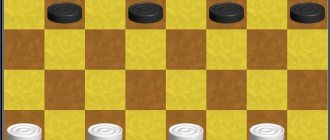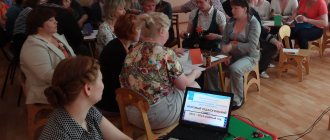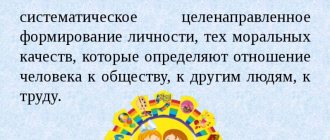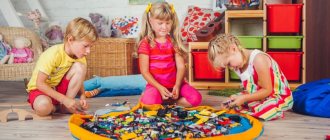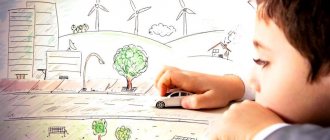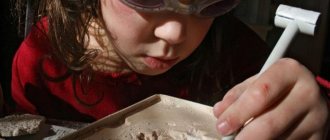Game situations for the social and emotional development of preschool children
Game situations of illustrative type
“Staging with toys is a ready-made solution”
With the help of toys or tabletop or finger theater characters, I act out a situation that reflects those aspects of life that a child needs to understand and get an idea of correct behavior: “How Yura helped his grandmother,” “Don’t forget the magic words,” “How Alena and Misha shared toys”, “How Kostya and Gordey made peace”. I demonstrate to children specific ways to correctly resolve everyday communication situations. By acting as interested spectators, children receive a model of socially approved behavior.
Game situations of active participation type
“Staging with toys - suggest a solution”
I involve children in finding the right solution. For this purpose, game characters turn to children with questions, enter into an argument, express doubt about the correctness of their advice, offer to choose the best solution from several, ask to show what actions need to be taken, what words to say to solve the problem (for example, how to thank , how to politely make a request, how to divide candy equally, how to calm down an offended person).
It is better to perform performances with “Give me a solution” toys after showing performances with a ready-made solution. Previously acquired ideas will help children correctly solve a new problem. How children perceive a situation and what solution they propose shows me how children's moral ideas and related experiences develop.
Game situations of direct assistance type
"Let's help our toys"
I organize situations that require active sympathy, help, and care from children: help a sick doll, feed a hungry kitten, build a bird feeder, pick out warm clothes for a monkey. Success depends on how well the content matches the children’s experience and life impressions. Children get involved in solving the problem: they not only discuss, but also practically carry out the necessary actions.
Practical game and real situations aimed at
to master cultural forms of behavior and communication (etiquette)
These situations can be organized both as dramatizations and as practical situations of playful and real content. For example,
“Let’s teach our dolls how to say hello and goodbye,” “Let’s show Mishutka how to receive guests,” “Let’s congratulate Ksyusha on her birthday.” Cultural habits are formed gradually, so regularly organizing such situations helps children gain the necessary experience of cultural behavior. The situations in which children resolve specific everyday problems are of greatest importance for social and emotional development. In my work, these are situations of practical assistance, active manifestation of attention, care for children and adults:
“We’ll help you find your lost item” (mittens, scarf, shoes); “Don’t be sad” (calm down, treat, play); “We meet a friend after illness”; “Let's exchange toys”; “We give gifts to babies (moms, dads).”
I emotionally represent the problem that has arisen (“Nastya returns to kindergarten after illness. How can we please her?”) and involve the children in finding a solution. If they find it difficult, I suggest or show them the correct way to solve the problem and offer to implement it themselves.
Working with younger preschoolers, I teach children to notice the difficulties of other people and try to help. For this purpose I am creating difficulties.
For example, in the “Toys scattered” situation, I deliberately drop small objects (small toys, cubes, pencils, rings from a pyramid) that I carry on a tray onto the floor: “Oh, I stumbled, I scattered all the toys!” Who will help me? And our nanny Ira is gone!” The children begin to help. I encourage them: “The toys wanted to run away from me, but you didn’t allow it. Katya brought two blocks, Yanochka brought pencils, Sasha found a Christmas tree, it was hidden, and he found it and brought it. You are so sharp, your hands are skillful. All the toys were put away. Thank you! You are good helpers."
Not all kids immediately jump into this situation. I don’t rush those who are just watching. Children get new impressions, see how interesting it is to act together with the teacher, and next time they will try to help. I organize similar situations many times. Each time, the children understand my difficulties faster and become more confident in helping, gaining valuable practical experience.
Practical situations like
“Everyone needs our care”
Children gain experience in participating in activities that are important for the kindergarten: “We decorate the kindergarten for the holiday,” “We plant flower seedlings,” “We plant a vegetable garden on the windowsill,” “We prepare manuals for classes: cut out ovals, squares, triangles.” . My task is to captivate children with the content of the upcoming task, to show that the results of joint efforts bring benefit and joy to others.
Practical situations of humanistic choice
I put children before a choice: respond to the problems of other children or prefer personal interests and show indifference? For example, keep the drawing for yourself or include it in a general message to a sick peer; let your baby play with your toy or remain indifferent to his request; respond to a request for help or ignore it. The behavior of children in situations of choice helps to better understand the characteristics of their social, moral and emotional development.
Practical problem-type situations
“What to do, what to do?”
These are various situations of difficulty that I create in order to awaken children’s initiative, independence, intelligence, responsiveness, and willingness to look for the right solution. For example, napkins “disappeared” from the tables; pictures came off on some cabinets; there are no paints of various colors (brown, green, orange); some children do not have enough plasticine for modeling; Spilled water was found on the floor; Children's mittens and shoes are mixed up. What should I do? Children look for a solution on their own. I am in no hurry to give advice, I listen to all opinions and suggestions. Together with the children, we find ways to solve problems: we mix paints to get the right color; divide the plasticine among everyone; figure out what to make napkins from; wipe off the water; we glue pictures on the cabinets; We sort mittens and shoes into pairs.
Practical situations like
“We are the oldest in kindergarten”
Children learn to take care of babies. They develop a sense of self-respect, a kind attitude towards little ones, and an understanding of their problems. I organize situations: “We will help the kids wash their toys and wash their doll clothes”, “We will delight the kids with handmade gifts”, “We will prepare a puppet theater (concert, performance) for the kids”, “We will help the kids make a snow woman (slide)”, “ Let’s teach the kids how to dance in circles.”
It is important to emphasize the feelings of the kids, who were the focus of the care of older preschoolers. This will give impetus to experience or to show reciprocal feelings.
Practical situations like
“We are friends with schoolchildren”
Senior preschoolers gain experience in cooperation with school students: “We are having a sports festival,” “We are waiting for guests - schoolchildren and a teacher,” “We are exchanging souvenirs,” “We are preparing a surprise for our friends - schoolchildren.”
Participation in such situations deepens interest in school and relieves anxiety associated with upcoming schooling. At the same time, valuable experience of inter-age communication is formed, which is important not only for preschoolers, but also for school students.
Practical situations like
“Teach your friend what you can do yourself”
I encourage children to show attention to each other, mutual assistance and cooperation: teach them how to sculpt, make toys, play board games, throw at a target, fold paper figures, spin a hoop, and somersault. By encouraging children to share their experiences, I help them enter into the role of “teacher”, i.e. be patient, attentive and forgiving to the difficulties and mistakes of peers.
In my work, I actively use conditional verbal situations.
They are associated with a discussion of life events, actions and relationships. I draw the content of situations from children's literature or invent them - then they look like an incident from the lives of children from another kindergarten, a boy or girl I know. The basis of the situation can be a video, book illustration or painting.
By revealing this or that life event to children, I challenge them to a frank conversation in order to connect the problems discussed with their personal experience, evoke appropriate feelings, and give the correct assessment.
When using verbal situations, I avoid direct analogies with events in the group, indicating specific names and actions of children. My task is to awaken certain emotional experiences inspired by the situation under discussion and help children independently draw the necessary conclusions.
The emotions experienced by children in real, play and conditional situations, which arise on my initiative or spontaneously, enrich the emotional world of my pupils and open up new opportunities for self-expression and interaction.
The social development of a preschooler, his contacts with others develop successfully under the condition of emotional “literacy”, i.e. the ability not only to culturally express one’s own feelings, but also to correctly understand and evaluate the emotions of others. Often a preschooler shows indifference to people due to the fact that he cannot understand their state, mood, and does not know how to “read the emotion” expressed in facial expressions and intonation gestures. Therefore, it is necessary to pay special attention to developing the ability to understand the emotional state of others, to distinguish between the expression of emotional states in real life and in art, and to recognize and regulate one’s own feelings.
Children acquire the ability to understand the emotional state of a person, expressed in the language of painting, music, fiction, theater, cinema, photography. At the same time, the ability to establish consonance between a person’s emotional state and the corresponding mood in art develops. The teacher’s goal is to develop in children the ability to convey feelings and emotional states in games, movements, dance, artistic, theatrical and visual activities.
Already in younger groups it is necessary to involve children in games - imitation.
Kids imitate the actions of different animals, and also convey images of animals and their cubs. According to the teacher’s demonstration and independently, in movements and facial expressions, they reproduce the different moods of animals (kind - angry, cheerful - sad, aggressive - calm) and their images. For example:
A small fast mouse and a big clumsy bear; affectionate, graceful cat and angry dog; a big, kind hen and small, lively, cheerful chickens.
Games are simulations of changes in emotional and physical states.
For example, a cat plays, falls asleep, wakes up, stretches, washes itself; the fox listens, sneaks up, tries to catch the mouse; cubs play, quarrel, make peace, calm each other down. The teacher pronounces the words, and the children perform the corresponding actions.
Games – imitation of states of nature.
Children depict how the leaves are spinning, the trees are swaying, the sun is rising - the flower is reaching out to it and smiling; the sun sets - the flower falls asleep and closes its petals.
Participation in imaginative games - simulations allows you to experience a variety of emotions, as well as see how other children and the teacher convey the emotional and physical state of the depicted image. This promotes the emotional development of each child and helps him better understand the emotional state of other people.
Imitation games are also an effective method of emotionally unloading preschoolers, switching their attention, and expanding their impressions. In younger groups, the teacher can conduct such games with children who wish to do so every day.
At early preschool age, the child is already capable of distinguishing and comparing clearly expressed contrasting emotional states (laughter - tears). At older preschool age, children understand a wider range of emotional manifestations, find their similarities and differences, and establish the reasons for different moods. Their attention is paid to the features of the external manifestation of the emotional state (the position of the eyebrows, the corners of the mouth ☺, eye expressions, gestures, postures, intonations). Gradually, children acquire emotional sensitivity, the ability to respond correctly to the moods and feelings of loved ones.
"Shop - Supermarket"
The content of the program - forms in children ideas about the work of people in a store, the variety of stores and their purpose. Learn to play different roles depending on the plot of the game. Develop effective visual thinking and communication skills. Cultivate goodwill, the ability to take into account the interests and opinions of gaming partners. Vocabulary words: showcase, cashier, confectionery. Game material: showcase, scales, cash register, bags and baskets for customers, seller’s uniform, money, wallets, goods by department, vehicle for transporting goods, cleaning equipment. “Grocery”: fruit and vegetable dummies, various salt dough pastries, candy dummies, sweets, cookies, cakes, pastries, tea boxes, juices, drinks, sausages, fish, milk cartons, sour cream glasses, yogurt pots, etc. Preparatory work: Conversations with children “What stores are there and what can you buy there?” “Who works in the store?”, “Rules for placing an order.” D / and “Store”, “Vegetables”, “Who is what?”. Reading the poem “Toy Store” by O. Emelyanova. B. Voronko “The History of Unusual Shopping” Making bagels, sandwiches, salt dough cookies, making sweets. Roles: seller, buyer, cashier, store manager, driver. The following scenes are played out: “Bread and confectionery shop (bread shop, shop)” “Vegetable shop (shop)” “Meat and sausage shop (shop)” “Fish shop (shop)” “Dairy shop (shop)” “Gastronomy. “Musical instrument store” “Bookstore” Game actions: The seller puts on a uniform, offers the goods, weighs, packs, puts the goods on the shelves (decorates the display case). The store manager organizes the work of store employees, makes requests for goods, pays attention to the correct work of the seller and cashier, and monitors the order in the store. Buyers come to the store, choose a product, find out the price, consult with sellers, follow the rules of conduct in a public place, line up at the cashier, pay for the purchase at the cash register, and receive a receipt. The cashier receives the money, stamps the check, issues the check, and delivers the change to the customer. The driver delivers a number of different goods, accepts orders from the store manager, and unloads the delivered goods.
What else to read: Card index of didactic games and exercises for kindergarten on sensory development of young children
